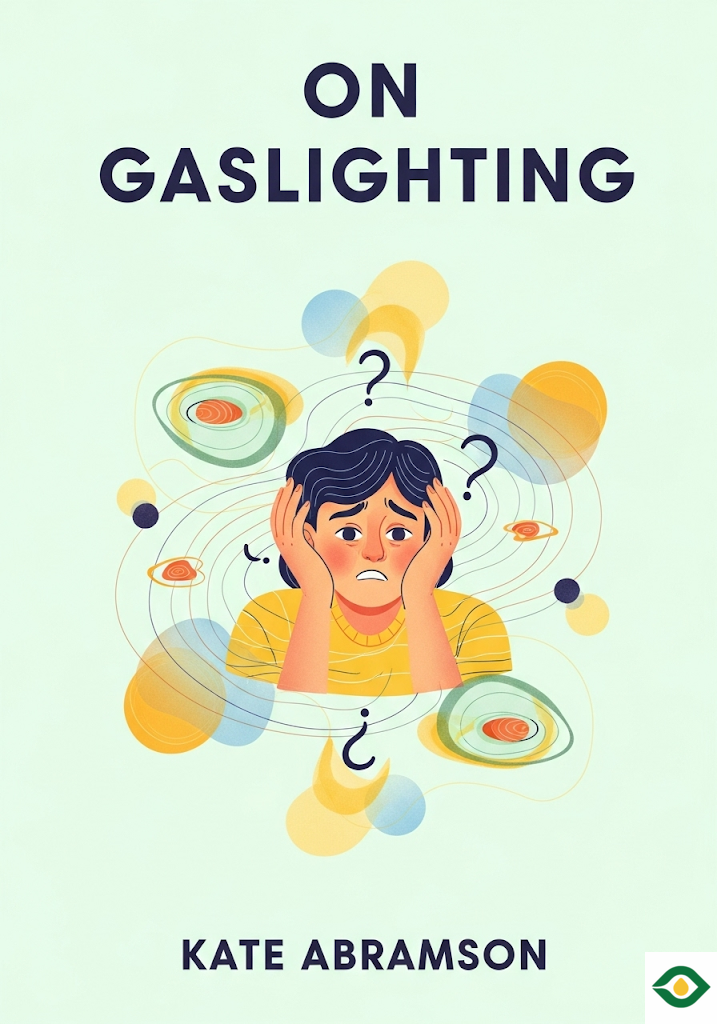Description
Gaslighting is a deeply destructive form of psychological manipulation. At its core, it involves convincing someone to distrust their own thoughts, feelings, and perceptions. When this happens, the victim begins to question their own memory and judgment so much that they become dependent on the manipulator for a sense of truth. The name “gaslighting” comes from an old Hollywood movie where a husband secretly changes the brightness of gas lamps in the house, then insists to his wife that she is imagining it. The effect is powerful: she begins to feel that she is losing her mind, when in fact she is the one who sees reality clearly.
Although the movie gave the behavior its name, gaslighting is far from fiction. It is a very real tactic that can occur in relationships, families, workplaces, and even larger social systems. What makes gaslighting so insidious is that it does not attack someone from the outside. Instead, it slowly erodes their inner compass. The victim begins to feel that their own eyes, ears, and emotions are unreliable, which is one of the most painful forms of harm a person can experience.
To better understand gaslighting, it helps to see how it differs from other kinds of manipulation. Brainwashing, for example, is about forcing someone to adopt new beliefs. Gaslighting is different—it does not directly change beliefs, but instead makes someone doubt themselves so completely that they no longer feel able to trust their own judgment. This constant doubt keeps them stuck, confused, and vulnerable.
Gaslighting is not just a single argument or a dismissive comment. It is a repeated pattern over time. The manipulator consistently undermines the victim’s confidence until the victim begins to internalize the false belief that they are unreliable or even “crazy.” Common phrases like “You’re imagining things,” “That never happened,” or “You’re too sensitive” might sound harmless on the surface, but when repeated and reinforced, they can trap someone in a cycle of self-doubt.
One place where gaslighting often shows up is in intimate relationships. Imagine a woman notices her partner hiding messages on his phone. When she asks about it, he laughs and says, “You’re paranoid. Nothing’s going on.” Even though she sees the suspicious behavior, she begins to wonder if her instincts are wrong. Over time, her partner’s repeated denial makes her distrust her own feelings, leaving her dependent on his version of events.
Gaslighting can also appear in families. For instance, when a child grows up being told, “You’re overreacting,” or “That’s not how it happened” every time they try to express their pain, they start to believe their emotions are exaggerated or invalid. As an adult, that child may continue to struggle with trusting their own feelings, always second-guessing themselves.
Workplaces can be breeding grounds for gaslighting too. Consider an employee who speaks up about inappropriate behavior, only to be told by her colleagues that she’s imagining things, or that she needs to lighten up. Even though the misconduct is real, she begins to question whether her perception is accurate. When authority figures dismiss her concerns, the harm is doubled: she feels silenced not just personally, but professionally.
Gaslighting also plays a role in issues of identity and discrimination. For example, when someone points out a racist or sexist comment and is told, “You’re overreacting,” or “It was just a compliment,” the experience of harm is denied. This leaves the person isolated and doubting themselves, while the harmful behavior continues unchecked. Over time, entire groups can be gaslit into feeling that their experiences of prejudice are “not real” or “not serious,” which reinforces systemic inequality.
Why do people gaslight? Sometimes the motive is selfish gain, such as a boss discrediting an employee to remove competition, or a partner hiding wrongdoing. At other times, the reason is deeper: gaslighters cannot tolerate challenges to their worldview. Rather than accept another perspective, they work to erase it altogether by convincing the other person that their perspective is invalid. Gaslighting, in this sense, is not only about power but also about control of reality itself.
Gaslighters use several key tactics. One is planting doubt. Humans naturally question their own memories from time to time, but gaslighters exploit this by repeating lines like “You always exaggerate” or “You’re remembering it wrong.” Over time, the victim feels unable to trust their own mind.
Another tactic is isolation. Gaslighters may separate their target from friends or colleagues who could offer perspective. Without outside support, the victim becomes trapped in the manipulator’s narrative.
Gaslighters also weaponize empathy. They might encourage the victim to feel sorry for them—“He’s just old-fashioned, he doesn’t mean harm”—which makes the victim dismiss their own feelings to protect the manipulator.
Authority is another powerful tool. A boss, teacher, or parent who gaslights can use their position to make the victim fear real-world consequences if they don’t conform to the manipulator’s version of events. This combination of psychological and practical pressure can make resistance feel impossible.
The damage caused by gaslighting is profound. It is not only emotional but also epistemic—it attacks the very foundation of knowledge and self-knowledge. Victims feel as though their reality is constantly slipping away, leaving them silent and powerless. They may lose the ability to trust their own perceptions entirely, relying instead on the manipulator to tell them what is real. This silencing makes gaslighting especially difficult to confront, because the victim may not even feel confident enough to describe what is happening to them.
Gaslighting is uniquely harmful because it is slippery. It does not always leave visible wounds. It operates quietly, through denial, dismissal, and distortion, making it hard for outsiders to recognize and even harder for victims to articulate. This hidden nature is what makes it so effective—and so dangerous.
At its core, gaslighting is about control. It strips away autonomy by convincing someone that their reality is false. It robs them of the ability to challenge, to question, or even to speak with confidence. And perhaps most damaging of all, it turns a person against themselves, making them doubt the very thing that should be most reliable: their own mind.
The lesson of gaslighting is clear. Recognizing it is the first step to breaking free. When you learn to trust your own perceptions and seek support from others who validate your experiences, you begin to reclaim your reality. Gaslighting thrives in silence and isolation, but it loses its power when exposed to light, honesty, and community.





